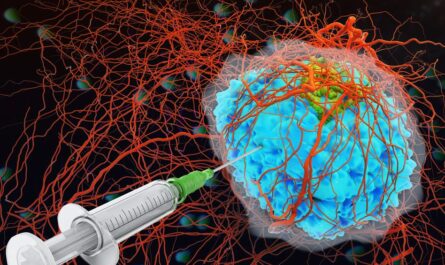
Introduction to Ozone Therapy
Ozone therapy, also known as medical ozone therapy, is a type of alternative medicine treatment that involves injecting or administering ozone gas into the body. Proponents claim it can help treat various diseases and improve overall well-being, though its effectiveness for most conditions is uncertain or lacking scientific evidence. Let’s explore the history and uses of ozone therapy, as well as current research on its potential benefits.
Origins and Background
The discovery and earliest medical applications of ozone can be traced back to the late 1800s. In 1857, Dr. Christian Friedrich Schonbein first observed that ozone is produced by electrical discharges in air and gave the gas its name, derived from the Greek word “ozein” meaning “to smell.” Early lab studies found ozone had disinfecting properties, and in the 1880s it began to be used to treat wounds and skin infections. Over subsequent decades, ozone therapy was gradually adopted by some medical practitioners in Europe as an alternative treatment approach. However, its usage remained controversial without conclusive scientific proof of effectiveness for most conditions.
How Ozone Therapy Works
Ozone is a triatomic form of oxygen that is generated artificially from oxygen gas. When administered into the body, proponents believe it enhances immune system function and stimulates healing responses through various biological pathways. Ozone is thought to increase oxygenation of tissues, stimulate blood circulation, induce production of cytokines and hormones, and exhibit antimicrobial properties against bacteria, viruses, protozoa and fungi. Treatments typically involve injections of medical-grade ozone directly into areas of injury, infection or pain. It may also be administered intravenously or vaginally in various therapeutic concentrations.
Potential Benefits of Medical Ozone Therapy
While scientific evidence is still limited for many uses, some research has found ozone therapy may provide benefits in the following contexts:
– Chronic wound healing – Case studies and small trials indicate ozone may help reduce bacterial load, stimulate angiogenesis and expedite closure of hard-to-treat wounds like diabetic ulcers or pressure sores.
– Musculoskeletal issues – Injecting ozone directly into affected joints or soft tissues is thought to reduce inflammation and alleviate conditions like lower back pain, herniated discs, tendinosis and osteoarthritis.
– circulatory diseases – By stimulating blood flow and oxygen delivery, ozone may benefit vascular insufficiency and ischemic conditions like peripheral artery disease. Some advocates also claim it helps reverse atherosclerosis but this is unproven.
– infections – Test tube research shows ozone to be an effective antimicrobial agent against common pathogens. Case reports found it helped resolve antibiotic-resistant infections when administered alongside standard care.
– Dental and oral applications – Ozone water rinses and root canal disinfection utilizes its germicidal properties to treat gingivitis, periodontitis and certain oral fungal infections.
– Detoxification and anti-aging – Early studies link ozone to stimulation of antioxidant defenses and increased cellular energy production. This has led some practitioners to utilize it as an anti-aging therapy to remove toxins and reduce free radical damage.
Safety Considerations and Risks
While generally well-tolerated when administered properly by a trained operator, medical ozone therapy can potentially cause some side effects like headaches, nausea, fatigue and local bruising or pain near injection sites. More serious reactions like air embolisms are also theoretically possible if treatment guidelines are not strictly followed. Due to limited research on long term safety, its use is still considered investigational for most medical conditions. Pregnant or breastfeeding women are advised against ozone therapy without physician supervision. Overall risk is thought to be low when performed by certified practitioners adhering to accepted protocols.
Ongoing Research and Conclusions
While dating back over a century, ozone therapy remains an alternative treatment without widespread acceptance in mainstream medicine. This is largely due to insufficient high-quality clinical trial data evaluating both effectiveness and safety profiles for most proposed uses. However, emerging scientific interest and ongoing research may help better establish where and when ozone could serve as a valid therapeutic option. For now, due to lack of definitive proof, it remains an unproven or controversial therapy outside of a few well-studied localized wound and dental applications. But its intriguing biological mechanisms and case reports hinting at broader potential continue driving further investigation into this little-known medical gas.


